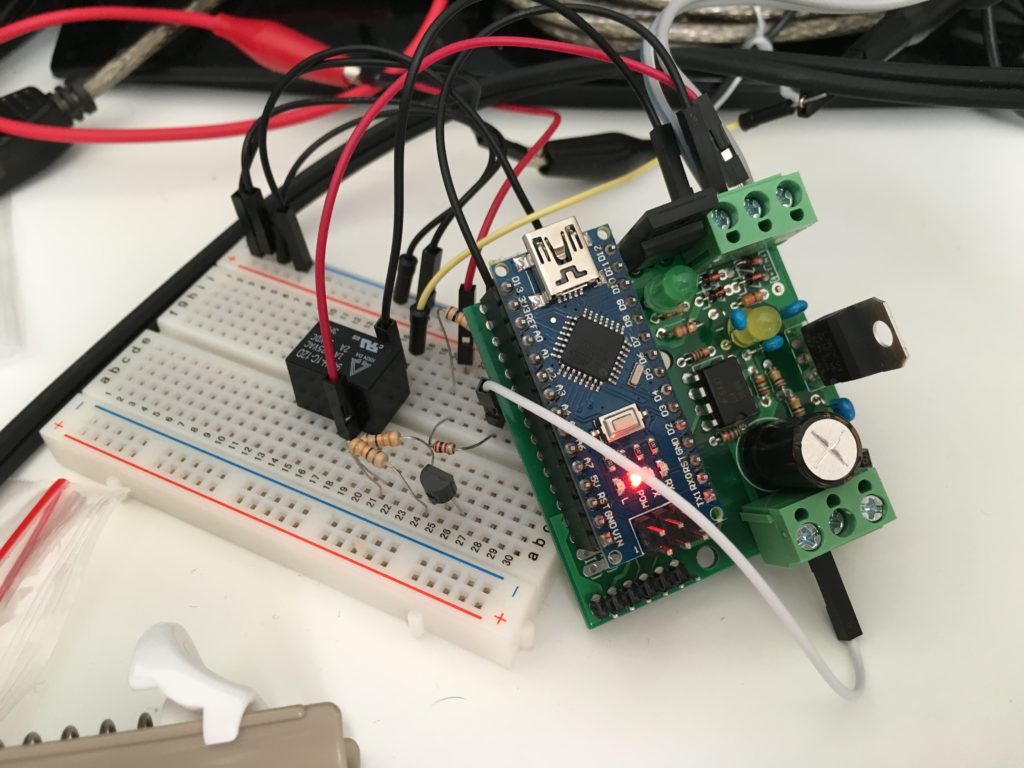Before installing the Fuelino EFI (electronic fuel injection) management controller on my motorcycle, a Honda CBR125R, I performed some tests "on the desk", in order to make sure that the unit was working properly.
The following video shows a test performed using:
- Pico DrDaq as a signal generator, to simulate the injector command signal coming from the original ECU. The DrDaq signal is a 0-1.5V voltage square signal, while Fuelino requires to have, as input, an "open switch" or "closed switch" signal. For this conversion, a simple BJT transistor was used. In order to simulate engine idle conditions, a signal of 100Hz frequency and 10% duty cycle was fed to the Fuelino.
- 12V relay, as a load. Fuelino controls the status of this relay. When Fuelino closes the FET transistor switch (FKI10531), the voltage drops to 0V and current flows inside the relay. On opposite, when Fuelino opens the FET transistor switch, the current quickly decreases, and there is a voltage spike due to the inductance of the relay. This spike can reach about 60V, and its amplitude is limited by the Zener diodes and the resistor in parallel with the FET.
Since testing with a physical relay was very loud, I also performed the same test using a 12V LED as a load, instead of the relay. In the following video, you can see the LED, on the breadboard, turning ON every time the Fuelino closes the FET transistor switch.
The system that I created is somehow an HIL (Hardware in the Loop) with the purpose of simulating the motorcycle behaviour. This simple "test bench" allows me to verify the behaviour of Fuelino "on the desk", which means without the need of testing it on the physical motorcycle. It is very useful everytime I make a simple software change, for quickly testing the proper behaviour.

